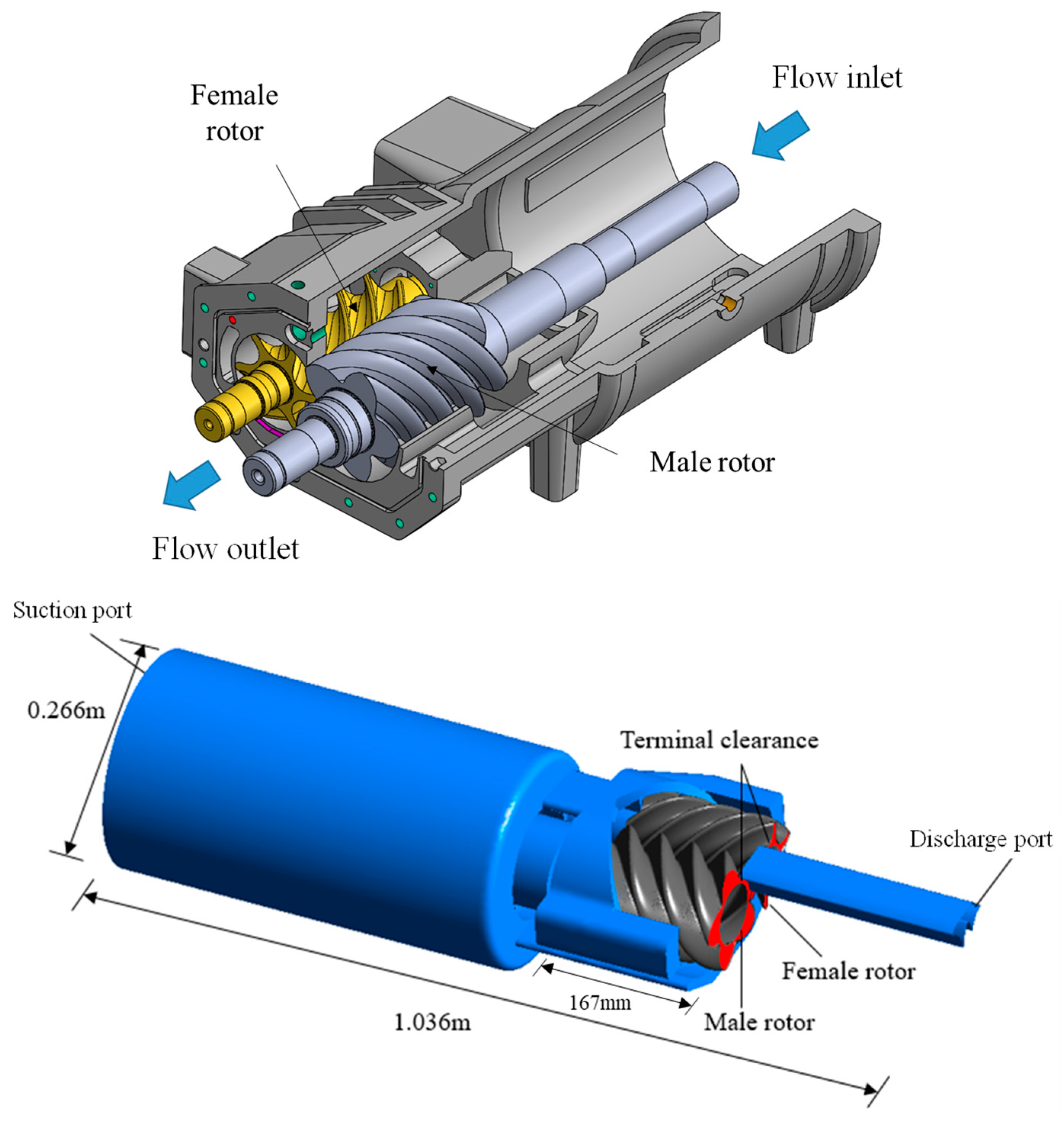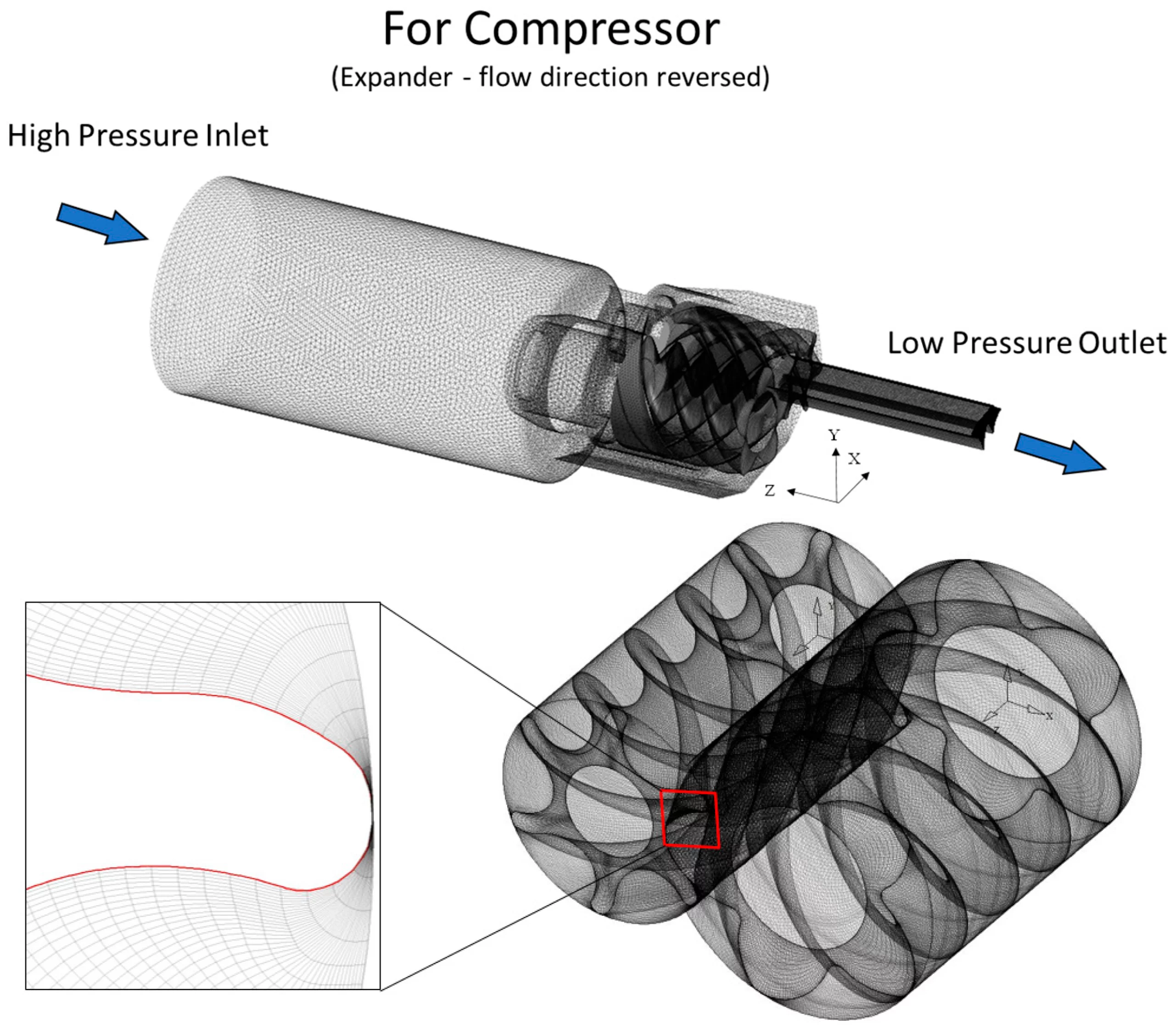Abstract
Increasing the efficiency of twin-screw machines is beneficial for gas compression and expansion applications. The researchers used a computation fluid dynamic approach to obtain the flow field and efficiency of a twin-screw machine that used R-134a as the working fluid. The leakage flow and sealing lines were obtained to study their geometrical effects during the compression and expansion process. The effects of the wrap angle (280°, 290°, and 300°) and pressure ratios on the compression efficiency were studied. During the compression process, the volumetric efficiency was more than 70% regardless of the wrap angle. The researchers found that the volumetric efficiency slightly decreased when the wrap angle increased. However, the effect of the wrap angle on the isentropic efficiency was not substantial. An increase in the pressure ratio decreased the mass flow rate and increased the leakage flow. This screw machine can also be operated in an expansion process, and the simulated expansion ratio was 3:1. However, this expansion ratio contributed to an underexpanded condition, which led to a lower volumetric and isentropic efficiencies compared with the original built-in expansion ratio scenario.
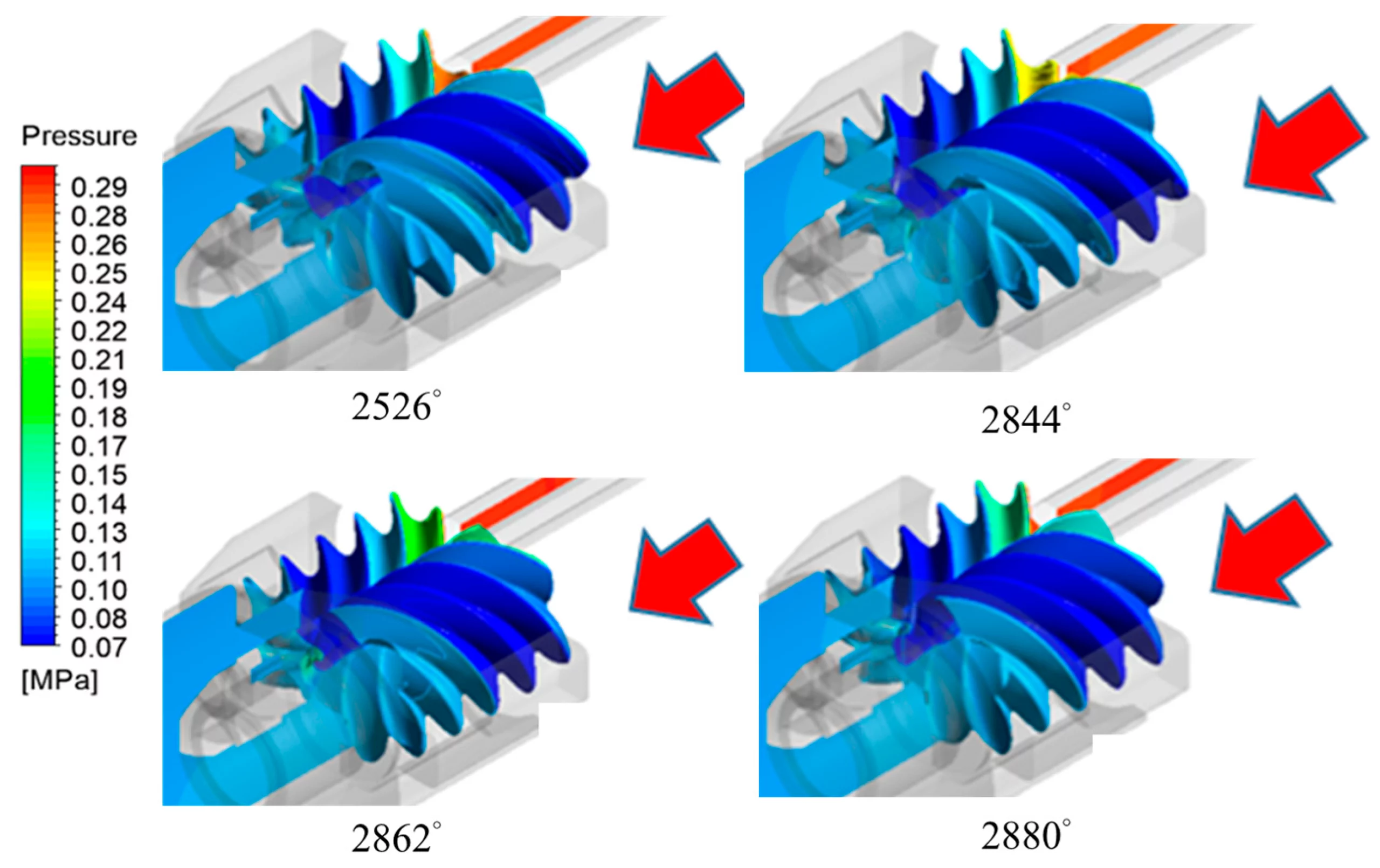
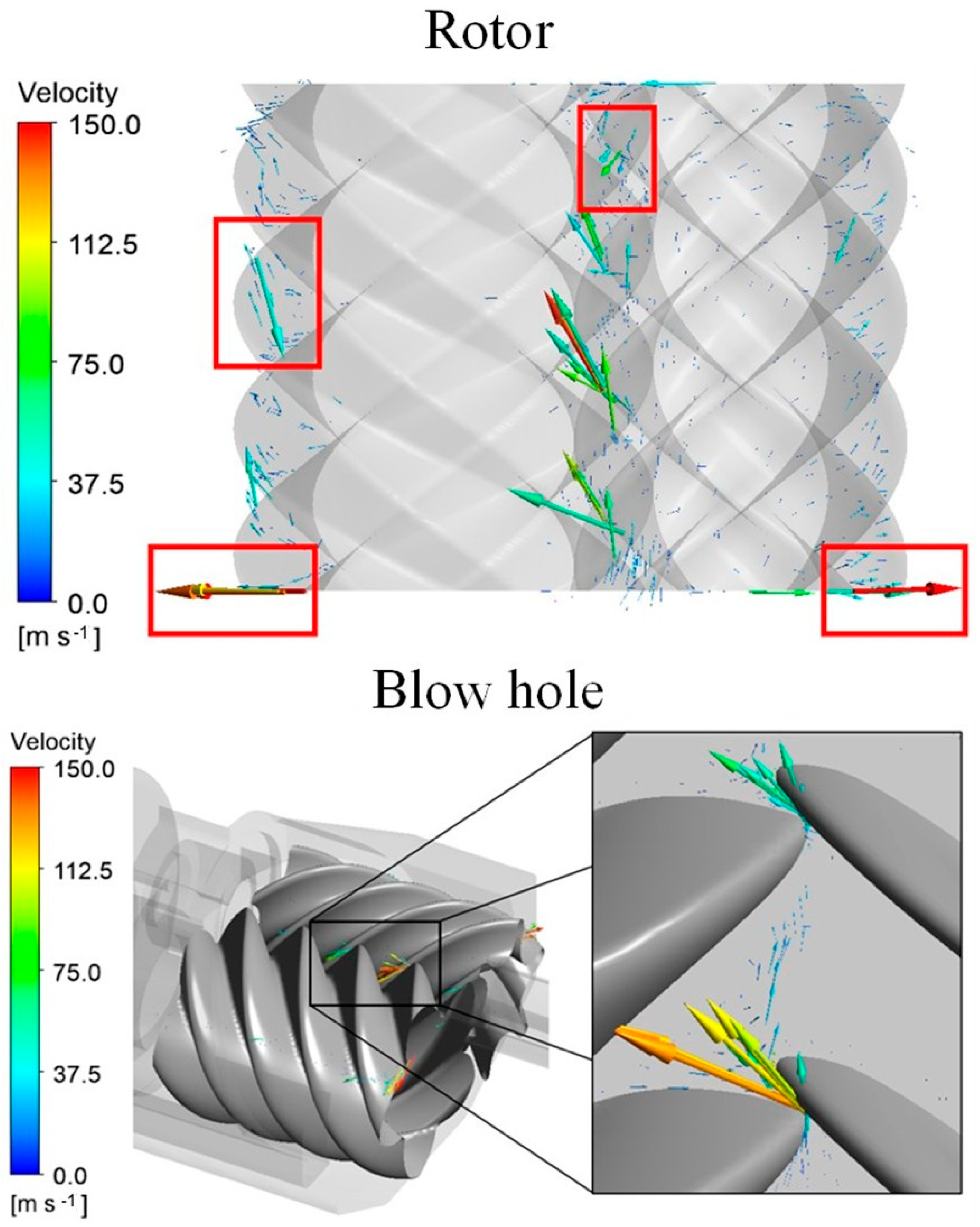
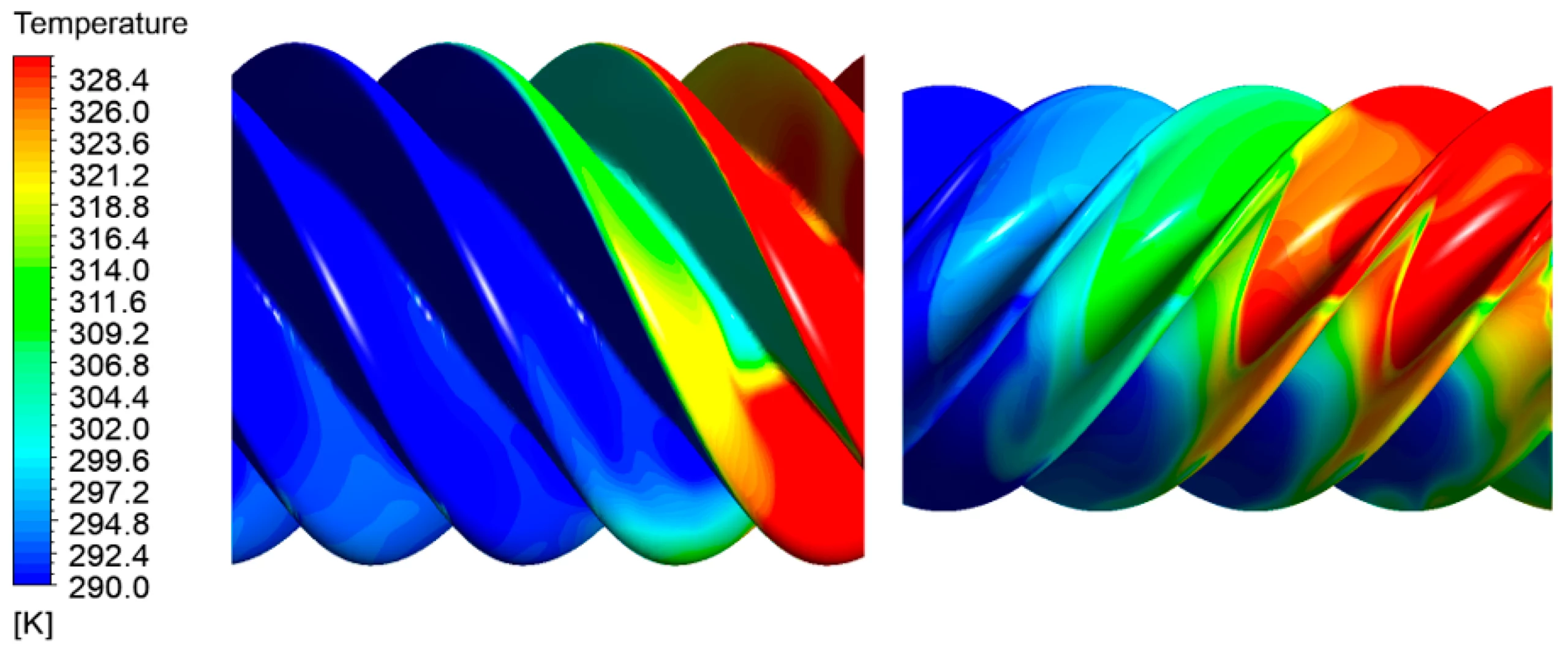
Conclusions
A numerical study was conducted to evaluate the feasibility of using a twin-screw machine for both compression and expansion processes. The effects of different wrap angles (280°, 290°, and 300°) and pressure ratios (3.16 and 4) were studied. The flow field, pressure, and temperature distributions were determined for the male and female rotors. The volumetric and isentropic efficiencies were also calculated by using the simulated results. The conclusions can be summarized as follows:
-
The wrap angle influenced the distribution of the sealing lines and altered the leakage flow, which affected the delivery rate and volumetric efficiency by up to 2%.
-
The leakage flow could be determined from the predicted flow distribution, and the highest velocity was above 100 m/s during the compression process as a result of the small gap clearance.
-
The isentropic efficiency was not sensitive to the change in the wrap angle, and the difference was within 1%.
-
An increase in the pressure ratio led to a decrease in the mass flow rate and volumetric efficiency because of the higher leakage flow rate. However, its influence on the isentropic efficiency was also unnoticeable.
-
This screw expander was operated in underexpanded conditions, and the pressure contours demonstrated a minimum pressure level below the outlet pressure. Higher volumetric and isentropic efficiencies could be achieved if the expander was operated at a ratio that was close to the built-in expansion ratio.

